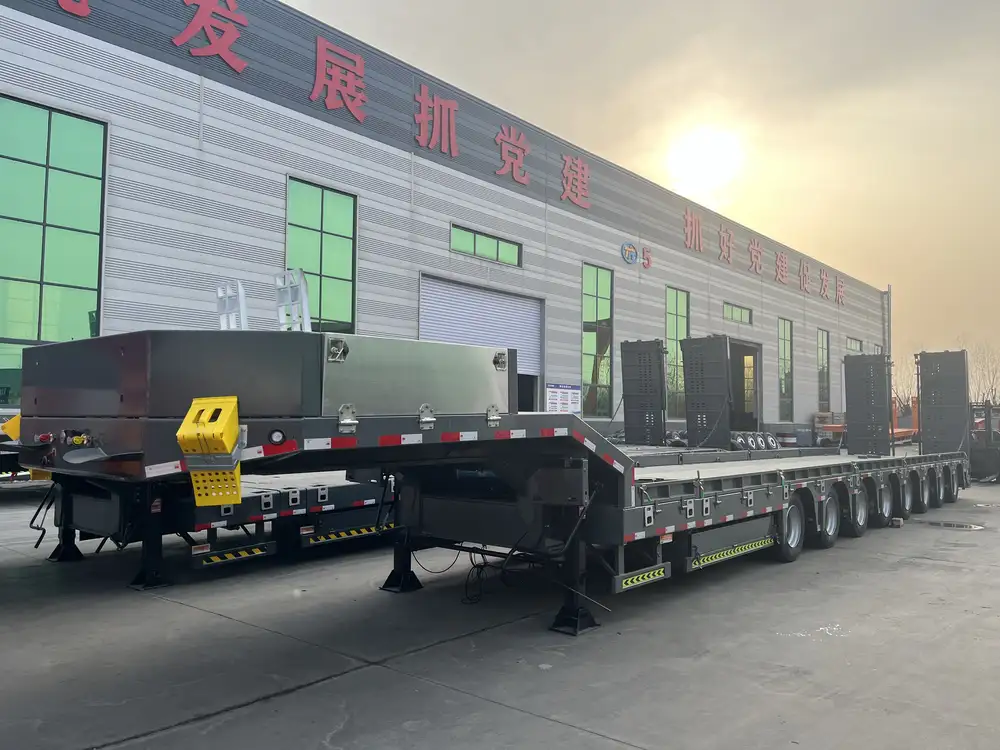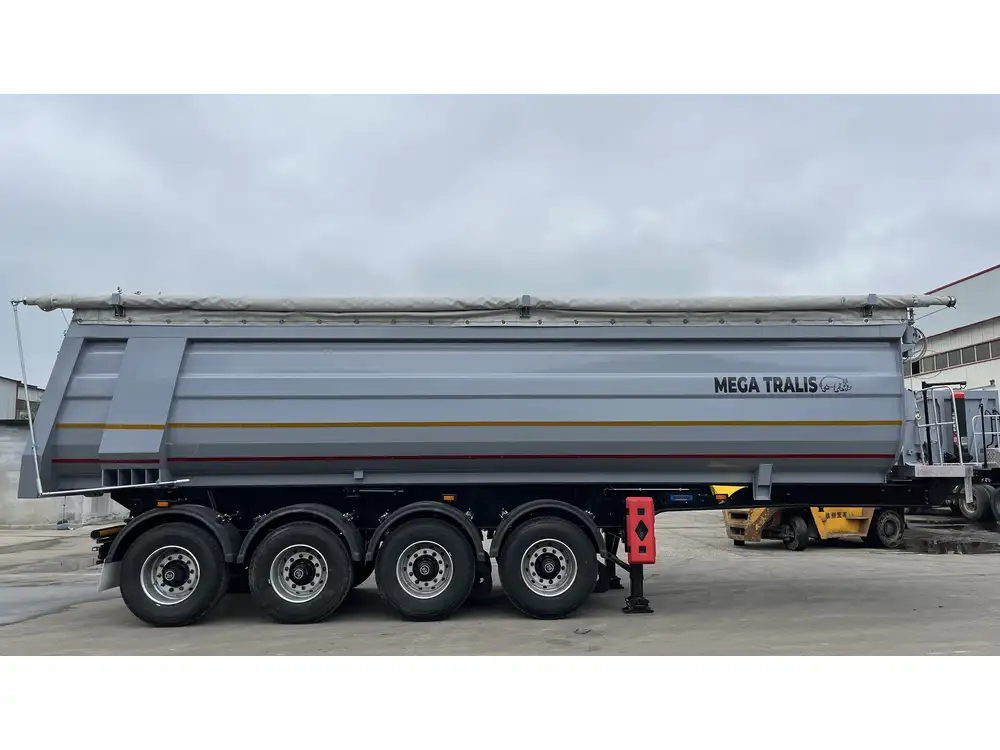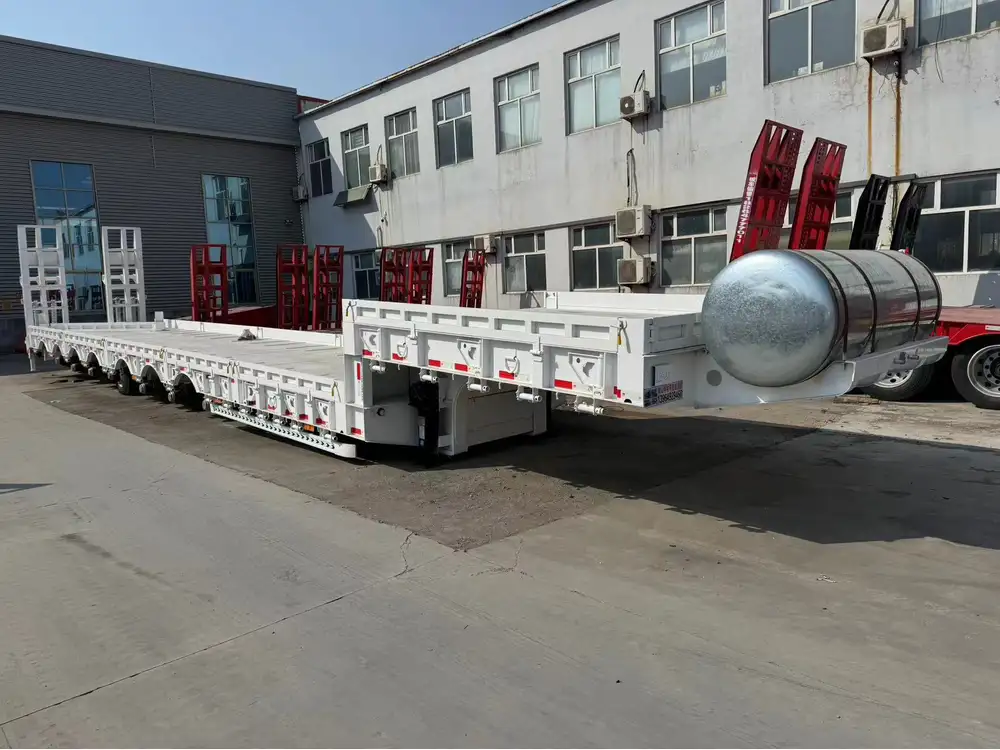When discussing semi-trailers, one of the most critical specifications that fleet operators, logistics managers, and manufacturers often evaluate is the deck height. The term “deck height” refers to the distance from the ground to the trailer’s floor. This measurement plays an essential role in various operational aspects, from loading and unloading cargo to adhering to legal regulations and optimizing aerodynamic efficiency.
What is Deck Height?
Deck height is a fundamental dimension that directly influences loading processes, accessibility, and the overall performance of a semi-trailer. Typically measured in inches or centimeters, deck height can vary widely depending on several factors, including the trailer type, suspension system, and intended use.
Standard Deck Heights
The deck height of a semi-trailer commonly ranges from 48 inches (121.9 cm) to 54 inches (137.2 cm). However, specialized trailers, such as lowboy or step-deck models, may present lower deck heights, while others used for specific applications may exhibit higher measurements.
| Type of Semi-Trailer | Typical Deck Height |
|---|---|
| Standard Flatbed | 48 – 54 inches |
| Lowboy | 18 – 24 inches |
| Step-Deck | 29 – 34 inches |
| Reefer | 48 – 54 inches |

Factors Affecting Deck Height
The deck height of a semi-trailer is not just a simple number; it is influenced by various factors that must be taken into account during the buying or leasing process.
1. Trailer Type
The type of semi-trailer being considered plays a significant role in determining its deck height. Flatbeds, for instance, generally boast higher deck heights for optimal load capacity and versatility. In contrast, lowboy trailers are engineered to accommodate heavy equipment or oversized cargo and thus feature lower deck heights to facilitate loading and stability.
2. Suspension System
The suspension system installed on the trailer can dramatically impact the deck height. For example, air suspension systems (designed to enhance ride quality) can allow for adjustable height. This adjustability enables operators to lower the deck height during loading and unloading, maximizing efficiency.

3. Cargo and Weight Distribution
Another crucial aspect to consider is the type of cargo being transported. Heavier loads might necessitate a lower deck height for better stability and reduced center of gravity during transport. Conversely, for lighter loads, a higher deck can provide better aerodynamics, especially important for long-haul trucking.
4. Legal Requirements
Compliance with legal height regulations is vital for semi-trailer operations. In the United States, for example, the maximum allowable height for vehicles is generally 13.5 feet (162 inches), including the load. This restriction directly impacts the feasible deck height, especially when calculating total vehicle height post-loading.
5. Load Accessibility
The ease of access to a deck also determines its height. For products requiring easy loading/unloading, a lower deck may be preferred, while those needing more clearance or specialized equipment may tolerate a higher deck height.

Deck Height and Operational Efficiency
Understanding the implications of deck height on operational efficiency is crucial for maximizing productivity in logistics and transport.
1. Loading and Unloading Dynamics
A semi-trailer’s deck height directly influences how swiftly and efficiently cargo can be loaded or unloaded. Higher deck heights can complicate processes requiring manual labor or certain loading machinery, while lower heights often facilitate smoother transitions.
2. Equipment Compatibility
Operators must match their loading equipment to the deck height of the trailer in use. Forklifts and pallet jacks, for example, have optimal operational height ranges. A mismatch could lead to inefficiencies, damaging goods or even causing safety hazards.

3. Stability During Transit
Achieving an optimal deck height is critical for maintaining stability during transport. A lower center of gravity generally leads to better handling, especially in adverse weather conditions or sharp turns. Favorable handling characteristics can minimize wear on tires and other components, leading to reduced maintenance costs.
4. Compliance with Regulations
Understanding and adhering to state and federal regulations concerning height limits ensures that semi-trailers operate within legally defined specifications. It helps avoid fines and operational downtimes that can arise from legal disputes or required modifications.
Comparing Deck Heights Across Different Trailer Types
To better illustrate the differences in deck heights, below is a comprehensive comparison of various trailer types, including their specific uses and inherent advantages.
| Trailer Type | Deck Height | Common Uses | Advantages |
|---|---|---|---|
| Standard Flatbed | 48 – 54 inches | General freight and construction materials | Versatility and ease of loading/unloading |
| Lowboy | 18 – 24 inches | Heavy machinery and oversized loads | Lower center of gravity for stability |
| Step-Deck | 29 – 34 inches | Tall loads that cannot exceed height restrictions | Multiple loading options |
| Reefer | 48 – 54 inches | Temperature-sensitive goods | Enhanced control over internal temperatures |

Measuring Deck Height Correctly
For effective selection and operational performance, accurately measuring deck height is essential. Here’s a step-by-step breakdown of the measuring process:
Preparation: Ensure the semi-trailer is on a level surface. This is crucial to avoid skewed measurements.
Measurement Tools: Use a reliable measuring tape marked in the desired measurement units (inches or centimeters).
Identify Points: Measure from the ground directly to the floor of the trailer at the rear and the front to ensure consistent readings.
Record Measurements: Document both points to verify if any adjustments are needed for alignment or leveling.
Average Calculation: If there’s a discrepancy between front and back measurements, calculate the average for more accurate planning.
Frequently Asked Questions About Semi-Trailer Deck Heights
1. Can deck heights be modified on existing trailers?
Yes, although possible, retrofitting a trailer’s deck height may require significant modifications and may not be economically feasible for all trailer types. It often involves adjusting the suspension system or re-engineering fundamental aspects of the trailer’s structure.

2. What are the impacts of exceeding standard deck heights?
Exceeding standard deck heights can lead to critical safety hazards, regulatory non-compliance, and significant fines. It also complicates loading and unloading processes, potentially resulting in material damage and operational delays.
3. How do seasonal changes affect deck height considerations?
Seasonal changes affect the road and weather conditions impacting driving challenges. For instance, during winter months, higher snow accumulation can necessitate reevaluating deck heights concerning freight limits and regulations.
4. Are there industry standards for deck heights?
While specific industry standards exist, they can vary widely based on the type of semi-trailer and its intended application. Fleet operators should stay informed about regulations specific to their region to ensure compliance.

5. How do low-profile tires impact deck height?
Low-profile tires can lower the overall deck height by several inches, improving aerodynamics and stability without compromising load capacity. However, operators should ensure compatibility with existing axle and suspension configurations.
Conclusion
In the intricate world of semi-trailer transportation, deck height stands as a pivotal factor influencing various operational aspects. A deep understanding of this dimension—along with the myriad of factors that affect it like trailer type, adjustments, and legal adherence—enables fleet operators and manufacturers to optimize their logistics strategies effectively.
By applying the insights shared in this article, stakeholders in the logistics and transportation industries can make informed decisions that enhance operational efficiency, comply with regulations, and ultimately drive bottom-line results. Understanding and leveraging deck height specifications isn’t merely about dimensions; it’s about harnessing efficiency, compliance, and safety in an ever-evolving transport landscape.



